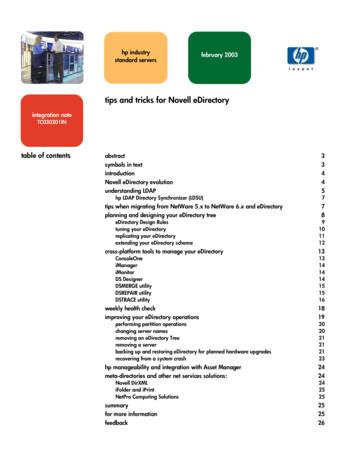WINDOWS AUDIO TIPS AND TRICKS - Peoria Medicine
WINDOWS AUDIO TIPSAND TRICKSChange Volume:Click the Speaker icon in the bottom right-hand corner:Adjust the volume slider for comfort.Configuring Audio – Best options1. Open the Start Menu and type “control panel” in the search bar. Click on the Control Panel atthe top
2. Change View to “Small icons”
3. Select “Sound”
4. This is the real sound control panel and should look like the following (you may have more thanone device):a. The bar on the right hand side should change to green when it detects soundb. The tabs at the top refer to specific sound options:i. Playback – This is a list of all speakers/headphones connected to your computer,sometimes monitors will be in this list as wellii. Recording – This is a list of all microphones connected to your computer, thiswill include the laptop microphone and any other connected audio inputdevices.iii. Sounds – This is where you can change Windows System sounds. We will beignoring this tab.iv. Communications – This tab has one setting that we will change since it seems tocause more issues than it solve
5. Click on the Communications tab:a. Select “Do Nothing”b. Click on “Apply”c. This reduces the sounds of other programs when a “Call” is answered. How Windowsdetermines what a call is will be based on the program and gets pretty random.Sometimes it will seem like the System Volume will swing wildly at random. Disablingthis helps6. Click on the Playback Tab:a. Change the volume on the volume slider (switch between 50% and 75% just for this test)b. You should see the green bar change for one of the devices when it switchesc. Did you hear the volume slider ping from the audio device you want to use?i. Set the volume slider back to the most comfortable option and adjust as neededd. Want to use a different device?
i. Select the Device you want to use and Click on “Set Default”ii. Repeat the volume slider test (step a) to make sure it is the correct devicee. Once the correct device is selected, it needs to be configured. Click on Properties:
i. In the device Properties windows there should be several tabs and most of themwill be different. The only tab we care about will be the “Advanced” tabii. Uncheck “Give exclusive mode applications priority” and “Allow applications totake exclusive control of this device”1. Start from the bottom when un-selecting the boxes (the bottom box willbe unusable otherwise2. This prevents applications from getting exclusivity over the device. Youmay have multiple applications that need access to speakers and themicrophone. Getting rid of these options will make things lesscomplicated to configure. We’ll be doing this for the microphone later.iii. Click on OK
7. Click on the Recording taba. You may see multiple microphones. Snap your fingers or lean in close and say somethingby the mic.i. Use the green bars to determine which microphone is currently live (there maybe multiple). Use the green bars to determine which microphone is which.ii. If the microphone you’d like to use is not the default (the one with the greencheck), select the microphone you’d like to use and click on “Set Default”iii. If no microphone seems to work, Skip to the next step
b. Click on Properties:
i. Go to the Listen tab:1. Click on “Listen to this device”. If the microphone is functional, youshould be able to hear something when you talk. It may just befeedback, but some audio should play2. Un-check “Listen to this device”
ii. Go to the Advanced tab:1. Uncheck “Give exclusive mode applications priority” and “Allowapplications to take exclusive control of this device”a. Start from the bottom when un-selecting the boxes (the bottombox will be unusable otherwiseb. This prevents applications from getting exclusivity over thedevice. You may have multiple applications that need access tospeakers and the microphone. Getting rid of these options willmake things less complicated to configure.
iii. Go to the Levels tab:1. This is the slider for your selected microphone, I suggest starting it inthe 70 to 80 range.2. Make sure that the Blue speaker Icon does not have a Cancel Icon suchas:a. If it does have the cancel Icon, click it. The icon should look likethe big picture above3. There may be an extra volume bar by the bottom arrow. This is thedecibel gain. It’ll have up to three or four settings to increase gain by 10db for each setting.a. Start by having this set to 04. Once you start using any of the teleconferencing software, you’ll wantto return to this step to adjust your microphonea. To adjust your mic:i. If it’s too loud, move the top slider to the left. Click on“Apply” and test again. This will keep your settingwithout closing the Microphone Properties.
ii. If it’s too quiet, move the top slider to the right. Click on“Apply” and test again.iii. If the microphone is still too quiet, move the gain sliderto the right by one (if it exists). Click on “Apply” and testagain. Treat it as a scale: Fine tune with the top slider,and use the gain slider for big jumps.b. It is easier to test with a partner to check each other’s’microphones5. Click OKiv. Click OKc. Click OK in the Sound control PanelMicrophone isn’t working in programs no matter what you do?1. You are using Windows 10 if your Start Menu button (bottom left-hand corner) looks like this:
2. If you are using Windows 10, Click the Start Menu button, click in the search box and type:“Microphone Privacy Settings”
3. Ensure the Following Settings are turned to ON (will have the blue slider)
4. If needed, make sure each application that you use is turned to ON
WINDOWS AUDIO TIPS AND TRICKS . Change Volume: Click the Speaker icon in the bottom right-hand corner: Adjust the volume slider for comfort. Configuring Audio – Best options . 1. Open the Start Menu and type “control panel” in the search bar. Click on the Control Panel at the top
Top 10 Android Tips & Tricks September 13, 2016 Top 10 Android Tips & Tricks September 13, 2016. Top 10 Android Tips & Tricks September 13, 2016 . Tips & Tricks September 13, 2016 Win a 50 gift card to Roots @ Robies! Refer a friend or come in to sign-up for a library card during September (National Library Card
The Windows The Windows Universe Universe Windows 3.1 Windows for Workgroups Windows 95 Windows 98 Windows 2000 1990 Today Business Consumer Windows Me Windows NT 3.51 Windows NT 4 Windows XP Pro/Home. 8 Windows XP Flavors Windows XP Professional Windows XP Home Windows 2003 Server
AutoCAD 2000 HDI 1.x.x Windows 95, 98, Me Windows NT4 Windows 2000 AutoCAD 2000i HDI 2.x.x Windows 95, 98, Me Windows NT4 Windows 2000 AutoCAD 2002 HDI 3.x.x Windows 98, Me Windows NT4 Windows 2000 Windows XP (with Autodesk update) AutoCAD 2004 HDI 4.x.x Windows NT4 Windows 2000 Windows XP AutoCAD 2005 HDI 5.x.x Windows 2000 Windows XP
765 S MEDIA TECHNOLOGY Designation Properties Page Audio Audio cables with braided shielding 766 Audio Audio cables, multicore with braided shielding 767 Audio Audio cables with foil shielding, single pair 768 Audio Audio cables, multipaired with foil shielding 769 Audio Audio cables, multipaired, spirally screened pairs and overall braided shielding 770 Audio Digital audio cables AES/EBU .
tips and tricks for Novell eDirectory abstract This integration note provides useful tips and tricks to help network administrators, developers, and users plan, design, manage, and optimize Novell eDirectory. Throughout this integration note, tips and tricks are offered in the following areas:
1 25 Tips & Tricks for Concur Expense Boost your Spendtelligence with best practices, tips and tricks for Concur Expense. From the Best Practices Dashboard to configuring approval flows to online Help menu in 21 languages, this eBook covers everything you need to know to get the most out of your Concur solution. 25 Tips & Tricks for Concur
Oct 08, 2018 · AutoHotkey Tricks AutoHotkey Tricks You Ought To Do With Windows 7. B—Beginning Tips for Writing AutoHotkey Scripts . Table of Contents — Jack's Motley Assortment of AutoHotkey Tips 1.1 Date Tricks Section A Trick for Inserting Next Friday's Date
mathematics at an advanced level, including articulation to university degree study. The Unit will provide learners with opportunities to develop the knowledge, understanding and skills to apply a range of differential and integral calculus techniques to the solution of mathematical problems. Outcomes On successful completion of the Unit the learner will be able to: 1 Use differentiation .























